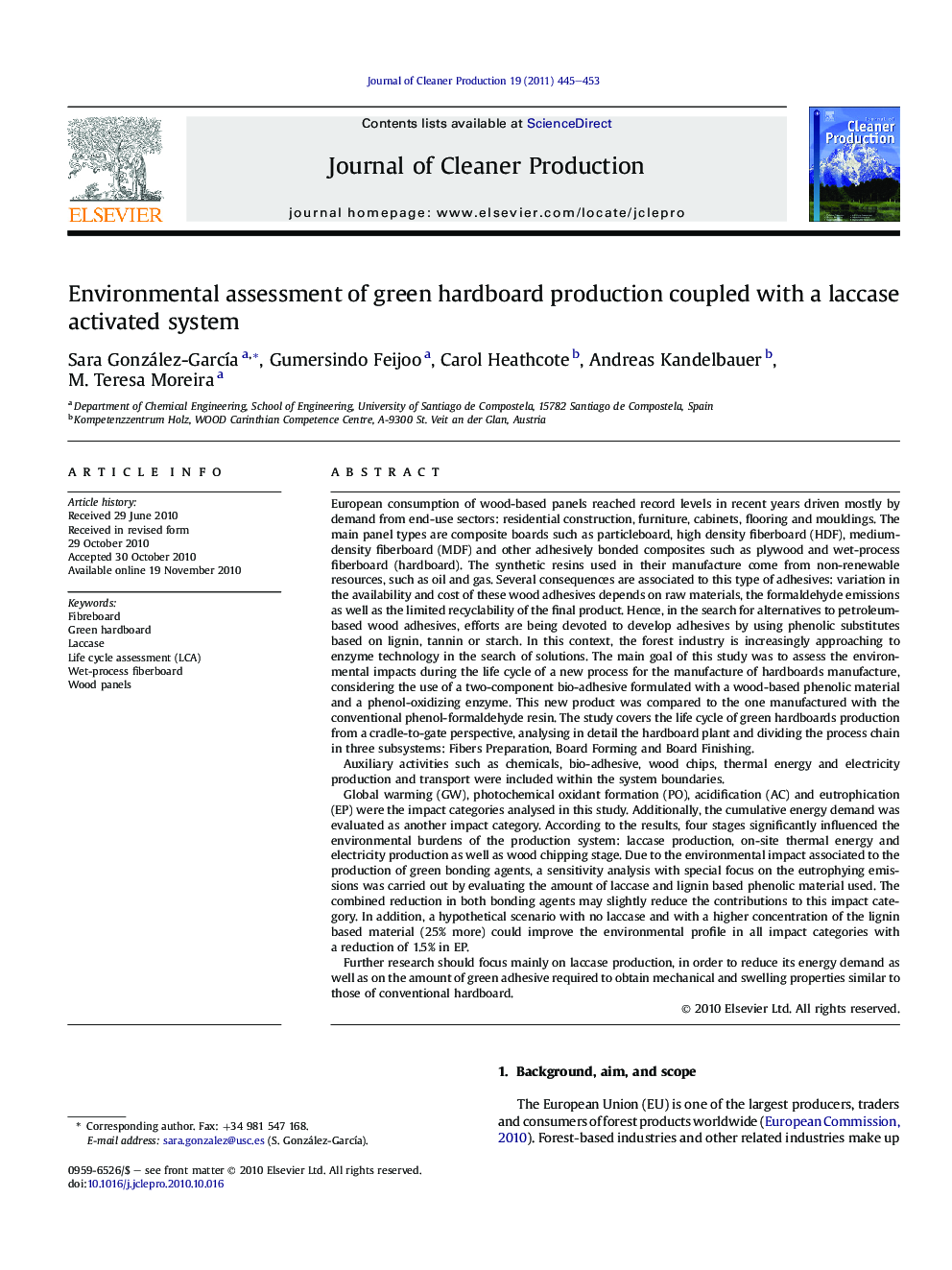| کد مقاله | کد نشریه | سال انتشار | مقاله انگلیسی | نسخه تمام متن |
|---|---|---|---|---|
| 1746256 | 1018087 | 2011 | 9 صفحه PDF | دانلود رایگان |

European consumption of wood-based panels reached record levels in recent years driven mostly by demand from end-use sectors: residential construction, furniture, cabinets, flooring and mouldings. The main panel types are composite boards such as particleboard, high density fiberboard (HDF), medium-density fiberboard (MDF) and other adhesively bonded composites such as plywood and wet-process fiberboard (hardboard). The synthetic resins used in their manufacture come from non-renewable resources, such as oil and gas. Several consequences are associated to this type of adhesives: variation in the availability and cost of these wood adhesives depends on raw materials, the formaldehyde emissions as well as the limited recyclability of the final product. Hence, in the search for alternatives to petroleum-based wood adhesives, efforts are being devoted to develop adhesives by using phenolic substitutes based on lignin, tannin or starch. In this context, the forest industry is increasingly approaching to enzyme technology in the search of solutions. The main goal of this study was to assess the environmental impacts during the life cycle of a new process for the manufacture of hardboards manufacture, considering the use of a two-component bio-adhesive formulated with a wood-based phenolic material and a phenol-oxidizing enzyme. This new product was compared to the one manufactured with the conventional phenol-formaldehyde resin. The study covers the life cycle of green hardboards production from a cradle-to-gate perspective, analysing in detail the hardboard plant and dividing the process chain in three subsystems: Fibers Preparation, Board Forming and Board Finishing.Auxiliary activities such as chemicals, bio-adhesive, wood chips, thermal energy and electricity production and transport were included within the system boundaries.Global warming (GW), photochemical oxidant formation (PO), acidification (AC) and eutrophication (EP) were the impact categories analysed in this study. Additionally, the cumulative energy demand was evaluated as another impact category. According to the results, four stages significantly influenced the environmental burdens of the production system: laccase production, on-site thermal energy and electricity production as well as wood chipping stage. Due to the environmental impact associated to the production of green bonding agents, a sensitivity analysis with special focus on the eutrophying emissions was carried out by evaluating the amount of laccase and lignin based phenolic material used. The combined reduction in both bonding agents may slightly reduce the contributions to this impact category. In addition, a hypothetical scenario with no laccase and with a higher concentration of the lignin based material (25% more) could improve the environmental profile in all impact categories with a reduction of 1.5% in EP.Further research should focus mainly on laccase production, in order to reduce its energy demand as well as on the amount of green adhesive required to obtain mechanical and swelling properties similar to those of conventional hardboard.
Journal: Journal of Cleaner Production - Volume 19, Issue 5, March 2011, Pages 445–453